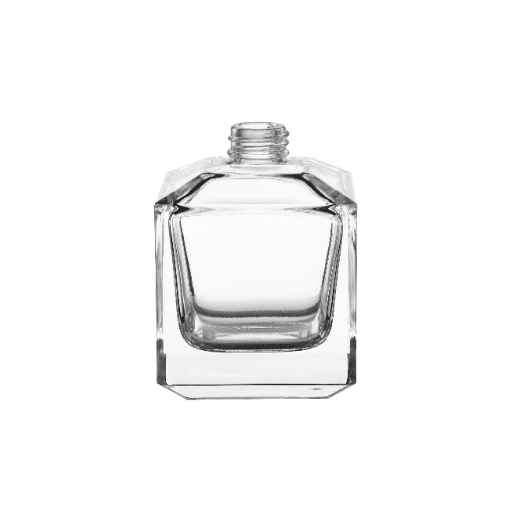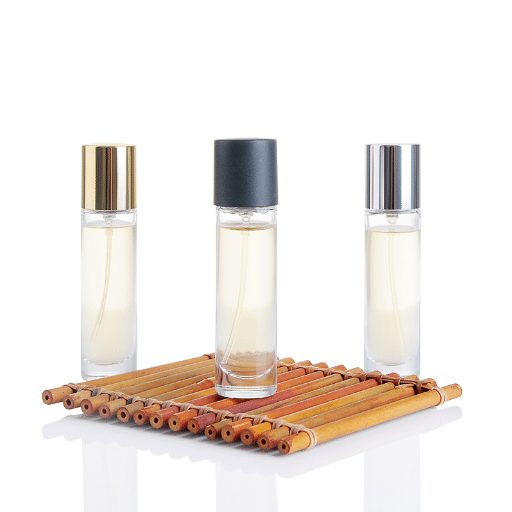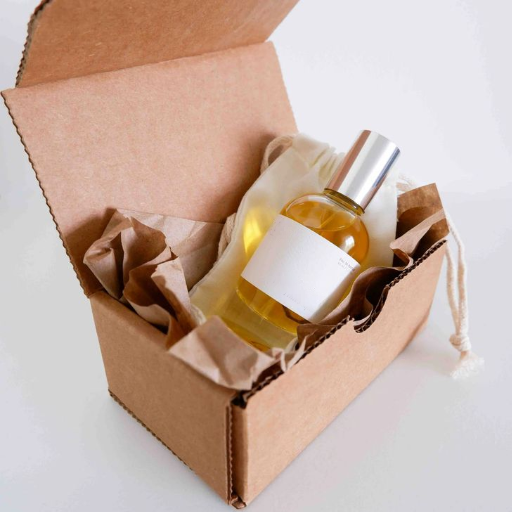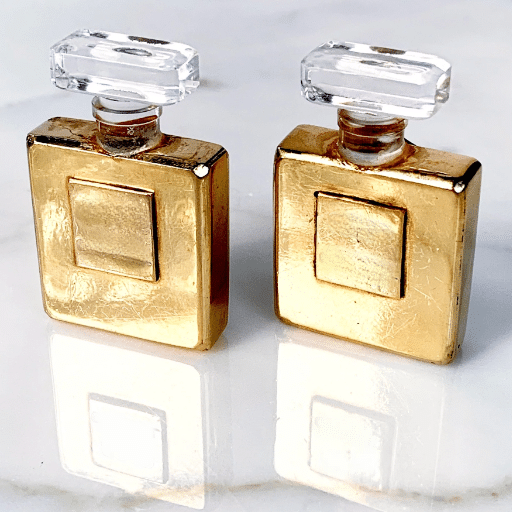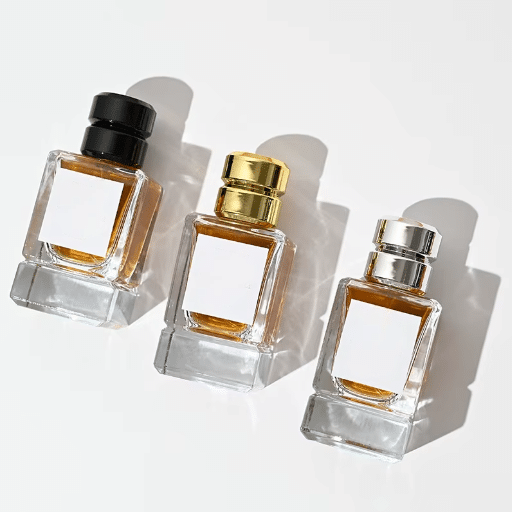Perfume flasks are not just simple vessels but intricate works of art that effectively combine artistic expression and utility while also protecting the gentle aroma inside. Despite all this, those flasks face numerous challenges, from transport and handling to the environments they encounter, and thus sturdiness becomes a very important factor in their design and manufacturing. This blog post examines the decisive role of stress testing in durable perfume bottles, the industry norms that provide guidelines for these procedures, and the criteria that both artisans and manufacturers rely on to ensure quality. No matter if you are a packaging engineer, a product designer, or just a simple consumer interested in the extreme efforts behind the scenes to ensure your favorite fragrance arrives whole, this piece will be a comprehensive dive into the methods and standards that determine the durability of today’s perfume bottles.
Understanding Perfume Bottle Durability
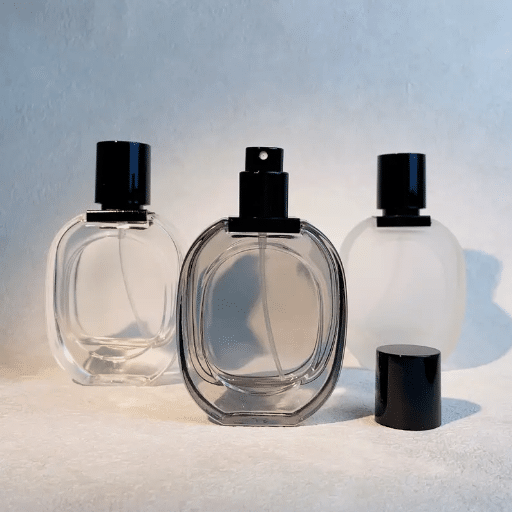
When it comes to the durability of perfume bottles, what matters most is the material they are made of, their structural design, and how they are put through various tests. High-grade glass is the choice of material here, offering an upscale look and resistance to environmental stresses, such as impact and pressure. The structural design is important in this case, and factors like maintaining uniform thickness throughout the bottle and distributing stress evenly help ensure the bottle has few, if any, weak spots. Tough testing, such as drop tests and checks of how the temperature rises and falls, is among the activities to verify that the bottle is suitable in all circumstances and can still be shipped or handled. Nevertheless, the manufacturers still have some room to add their touch when combining two aspects – elegance and strength – by ensuring the product meets strict industry criteria while retaining the design’s beauty.
The Importance of Durability in Perfume Bottles
In the perfume sector, toughness is crucial. The perfume is expensive, and breakage can happen at any stage of the bottle’s life. The perfume bottles have to withstand a lot of hardship, such as falls, pressure fluctuations during transportation, and exposure to different temperatures. The right materials, like reinforced glass or advanced polymers, are among the ways research has shown will definitely make it less likely for bottles to break or leak. Also, the use of held atomizer seals ensures the scent is protected and the spray remains consistent. The new manufacturing methods, such as precision molding and stress testing, ensure the product is durable and reliable, prolonging its life and enhancing the client’s satisfaction. By opting for a durable structure, manufacturers not only protect the product but also align with consumers’ expectations by balancing utility and luxury.
Factors Influencing Perfume Bottle Durability
- Material Composition
Materials such as aluminum, glass, and plastic are almost always used to produce perfume bottles. Among them, Glass is considered the most ideal choice due to its inert nature and beauty. The highest-grade borosilicate or soda-lime glass can exhibit excellent thermal shock resistance, thereby minimizing the risk of cracks or breaks. Some experiments show that tempered glass can withstand impact forces 4 times those of regular glass, thereby substantially extending its lifespan. - Wall Thickness
The bottle’s wall thickness is the most crucial factor affecting its toughness. Bottles with uniform wall thickness are less likely to develop stress fractures or pressure-related collapses and are thus safe to transport. The typical premium perfume package can have a glass thickness of at least 1.5–2 mm to be durable and, at the same time, beautiful after all. - Seal Integrity
Crimped or screwed-on atomizer fittings are the main elements of a product with a robust seal, thus preventing any contamination from loose or external sources and maintaining zero leakage. Sophisticated designs feature neatly cut threads and silicon gaskets, providing hassle-free sealing and working across a range of environmental conditions. - Surface Coating and Finishing
The bottle’s exterior is weather- and wear-resistant, protected by a group of protective layers primarily consisting of UV-resistant varnishes or scratch-resistant polymer coatings. An experiment demonstrated that nanocoatings could reduce surface wear from cosmetics by 30%, keeping the bottle’s appearance very new and the consumer very happy. - Resistance to Environmental Conditions
Perfume bottles are subjected to a lot of pressure, with heat, humidity, and pressure variation among the parameters. Heat treatment of the glass provides thermal insulation for a bottle that can withstand temperatures between -20°C and 70°C. Also, the creation of air-tight systems reduces the likelihood of humidity, which can change the consistency of the liquid inside or the physical strength of the bottle. - Drop and Impact Testing
One way to assess how well a bottle withstands impacts is through rigorous quality control checks, which are possible only through drop tests. It is a known fact that bottles with solid bases can withstand falls of up to 1.5 meters without breaking. Additionally, drop impact tests ensure that the bottle has been designed reliably for handling and transportation.
Common Materials Used in Perfume Bottle Design
|
Material |
Description |
Key Properties |
Example Usage |
|---|---|---|---|
|
Glass |
Primary material for perfume bottles. |
Transparent, durable, recyclable. |
High-end and luxury bottles. |
|
Plastic |
Lightweight alternative to glass. |
Affordable, impact-resistant. |
Travel-sized bottles, sprays. |
|
Aluminum |
Metal often used for perfume casing. |
Lightweight, corrosion-resistant. |
Outer shells, travel applications. |
|
Stainless Steel |
Used for decorative and functional parts. |
Durable, non-reactive, sleek. |
Caps, sprayers, nozzles. |
|
Acrylic |
High-quality synthetic substitute for glass. |
Shatter-resistant, clear. |
Specialty designs, protective caps. |
|
Ceramic |
Occasionally used for unique designs. |
Opaque, artistic, customizable. |
Limited editions, boutique bottles. |
|
Wood |
Utilized in eco-friendly designs. |
Natural, biodegradable, aesthetic. |
Caps, decorative elements. |
Quality Control in Perfume Bottle Testing
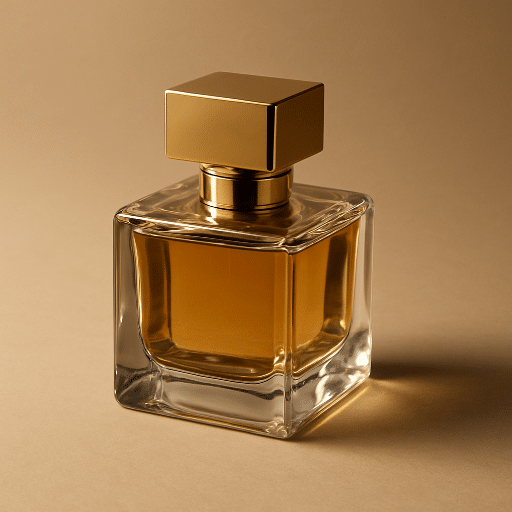
The process of ensuring the quality of perfume bottles is maintained through rigorous assessments that evaluate the packaging’s functionality, safety, and longevity. Among these tests are the following:
- Leakage Testing – This test is performed to ensure that the bottles maintain a tight seal and prevent any loss of their contents, particularly during transportation or storage.
- Drop and Impact Resistance – This test assesses the bottle’s firmness to prevent breakage from clashing, especially with glass and acrylic containers.
- Chemical Compatibility – The purpose of this test is to determine whether there are any reactions between the bottle materials and the perfume that could alter the scent or cause material breakdown.
- Closure Integrity – This test checks the fit and functionality of caps, sprayers, and nozzles, ensuring they are working properly and that no evaporation occurs.
- Environmental Testing – This test involves exposing the bottles to very high and very low temperatures, as well as to moisture, to see if they remain the same and thus function under different conditions.
These measures ensure that the bottles of perfume conform to industry standards, providing consumers with a reliable, visually pleasing experience.
Visual Inspection Techniques for Quality Assurance
The importance of visual inspection techniques for quality control of perfume bottles and the continuity of production batches must be strongly emphasized. Modern equipment, such as automated optical inspection (AOI) systems, is gaining ground for the instant detection of defects. The processes range from discrepancies in glass, for example, to surfaces of plastics that have never been entirely made smooth, to deviations in decorative elements, among others. The systems use high-quality cameras and precise lighting to capture and analyze details that a human might miss. Additionally, ultraviolet (UV) light is another inspection method used to detect material composition and stress fractures. Suppose a company decides to use any of the latest methodologies. In that case, it will increase the percentage of defects detected and reduce human error, while satisfying demanding quality standards and thus ensuring compliance. These inspections are not only necessary for functionality but also for preserving the exclusive aesthetic value of luxury perfume packaging.
Standardized Testing Methods for Durability
There is a need to test the durability of different materials to ensure they will last as expected, which is why standardized testing methods focus on measuring the toughness of materials through simulations of real-world conditions. A primary technique in this respect is the accelerated aging test, in which materials are exposed to high temperatures, humidity, and UV radiation to assess their lifespans and performance under different environmental conditions. Tensile and compression testing are other standard methods used to determine the mechanical properties of packaging materials, and these tests provide numerical data on the maximum physical force a material can withstand.
Drop tests are also conducted to assess the packaging’s impact resistance, simulating potential shipping or handling conditions. Primarily, these tests are based on industry protocols such as ASTM D5276 or ISO 2248, and thus, similar results are expected across manufacturers. Because of the deployment of stringent, repeatable protocols, durability tests can provide information on material strength and support design optimization for rigorous modern tile applications.
Quality Control Metrics in the Fragrance Industry
The fragrance industry uses stringent quality control measures to maintain product consistency, safety, and customer satisfaction. One important measure is the stability of fragrance and its odour, which are checked over a long period under changing environmental conditions such as temperature and humidity. One of the most common methods used to identify and quantify individual fragrance components is gas chromatography-mass spectrometry (GC-MS), an exact analytical technique that is instrumental in meeting regulatory norms and preventing formula deviations.
Batch consistency testing is a significant metric. It ensures that the physical and chemical characteristics of the products, such as viscosity, density, and refractive index, are within the same range for each production batch. On top of that, safety evaluation protocols ensure that products comply with the International Fragrance Association (IFRA) criteria, with a special focus on allergens and the product’s dermal response. Companies that manage to keep the aforementioned advanced testing methodologies and more stringent regulatory norms as part of their processes end up achieving a balance between innovation and customer trust, thereby adding reliability and marketability to their products as a new dimension.
Methods of Perfume Bottle Testing

- Leakage Testing – This means the bottles do not have any flaws that could cause leaks under normal conditions.
- Drop Testing – Evaluates the bottle’s ability to withstand accidental drops or impacts by simulating falls from specific heights.
- Thermal Resistance Testing – Indicating the capability of the bottle to be subjected to various temperature ranges without affecting the contents of the bottle.
- Compatibility Testing – Verifying that the bottle’s materials do not react with or alter the contents, thus preserving the aroma’s purity throughout the duration.
- Closure Integrity Testing – Giving away the strength of the cap or spray mechanism; it definitely stops any leakage or seepage by virtue of adequate sealing.
Drop Tests: Assessing Impact Resistance
Drop tests are essential for assessing a bottle’s resistance to damage and its strength under accidental impacts during transport. The tests carried out involve dropping the bottle from specific points at different angles to mimic the conditions under which soda or beer bottles are broken on a daily basis. Factors, including the surface type, drop height, and impact angle, are carefully and systematically varied to obtain comprehensive data on each bottle’s toughness. Industry standards, such as ASTM D5276, define the procedures that should be followed to ensure consistent, reliable testing.
Drop testing is a rigorous method that can reveal a range of design errors, such as stress cracks or areas of deformation. The role of materials engineering is vital here, as bottles made of polyethylene terephthalate (PET), for instance, are much less prone to shattering than glass. Such tests are conducted not only to assess the quality and choice of material but also to minimize the risk to humans and animals if they are exposed to it. Through meticulous analysis, drop tests are conducted to identify potential stress fractures or points of deformation. Materials engineering plays a significant role, as bottles made from polyethylene terephthalate (PET), for example, exhibit greater impact resistance than glass. Not only does this process help manufacturers optimize material selection and design features, but it also ensures compliance with safety and quality regulations; thus, it enhances customer satisfaction and minimizes product losses.
Thermal Shock Analysis: Evaluating Temperature Resilience
The data reveal that thermal shock analysis is an essential technique for assessing a material’s resistance to rapid changes in temperature; this indicates that the material will not break and is thus very reliable. In most cases, the method is to heat the material to an extreme temperature, then suddenly cool it. Materials would be observed based on their reaction to thermal stress. Materials with both high thermal conductivity and low thermal expansion, such as ceramics and certain metal alloys, are least affected by thermal shock. The use of sophisticated computer tools is effective for predicting the behavior of the material under similar conditions and, in fact, contributes to more of this type of industrial application. Surprisingly, the latest research efforts are often directed towards the thermal shock resistance of composite materials. Two methods that are reflected and work in the same direction are the application of nanostructure enhancements and the use of optimized bonding techniques. Such an approach is geared towards serving the present demanding industries, namely aerospace, electronics, and high-performance manufacturing.
Spray Mechanism Testing: Ensuring Functional Integrity
One of the most critical test phases to conduct before the spraying mechanism is up and running, allowing the company to achieve the best results, is the spraying mechanism test. Every spraying system operates through its spraying mechanism. Now, this is where the spraying mechanism comes in; besides, it is of great industrial consequence when we talk about unifying droplet size and so on. For example, only hourly measurements of flow rate are needed, and comparisons with the collected data will determine the difference. So maybe a comparison of the data will answer.
Indeed, the procedures are increasing day by day with high-speed imaging and laser diffraction tests, which will let developers know more about their systems and their measures than they have ever been aware of. For example, the high-speed vision method can indicate the formation and diffusion of spray and droplets in real time, informing those involved and helping spot the possible source of the nozzle’s malfunction. Moreover, the same quantitative particle size data from the laser diffraction systems are the foremost factors affecting the efficiency of the application and the quality of the product.
Industry Standards for Perfume Bottle Quality
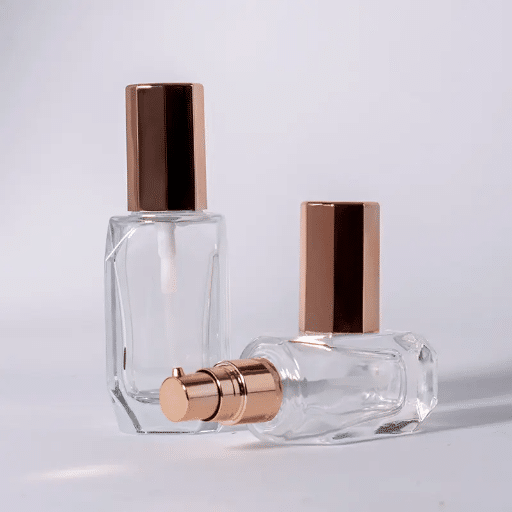
Within the scope of standards, the quality of a perfume bottle is gauged. Examinations of the perfume bottle assess each of the three factors: durability, functionality, and aesthetic appeal. One of the most crucial requirements in the setting section of the regulation is the type of material used, which must be unreactive with the perfume, so that no leakage or contamination is possible. Global bodies like ISO 9001 also set standards; for example, one clause requires manufacturers to consistently follow the same processes so that the product maintains the same quality across batches. Furthermore, one method for determining the quality of a perfume bottle is testing, which commonly involves authenticating the results and primarily focuses on spray efficiency, droplet-size distribution, and the cap’s seal. Companies that do not comply with the set standards not only risk losing their brand’s credibility but also face expulsion from the market due to the existing stiff competition.
Established Guidelines for Durability Testing
Usually, the process of conducting consumer product tests involves a comprehensive evaluation of the product’s quality, including its ability to withstand various pressures and other factors, such as weather and temperature. It is common to encounter situations where accelerated aging tests simulate years of use by subjecting products to extreme cycles of heat, cold, moisture, and UV light. Furthermore, mechanical tests such as drop tests, impact resistance tests, and vibration tests are conducted to determine the material’s performance under physical forces. Of course, tests for chemical resistance are also necessary when there is a possibility that the materials will need to handle corrosive agents or solvents during their lifetime.
The integration of real-world use simulations that simulate usual consumer interactions and thus detect failure points is the most critical issue. Besides, it is pretty common for regulatory standards issued by ASTM International, ISO, and others to include detailed requirements that must be followed, ensuring that assessments are consistent and replicable. This is also the case with the so-called “advanced methodologies,” such as finite element analysis (FEA) and digital twins, which are increasingly being deployed to anticipate product behavior under changing conditions, enabling proactive design. The development of such testing regimes will contribute to the realization of a product that is resilient, reliable, and therefore meets consumer needs over the long term.
Emerging Standards and Innovations in Testing
Testing is seeing a significant shift in its landscape, driven by technology and industry standards. The machine learning integration is one of the developments that stand out, as it speeds up the testing process, improves precision, and enables more accurate pinpointing of failures—machine learning algorithms process large amounts of data to test. The advantage is that algorithms can spot patterns the human eye cannot and predict outcomes with a very high degree of precision, thereby reducing the time and cost of testing.
Moreover, the implementation of Industry 4.0 principles is another major innovation, such as IoT-enabled sensors and real-time data analytics that improve test environments. The automatic detection and measurement of environmental conditions would enable real-time adaptation and improve not only the overall reliability but also the reliability of the test environment. In addition to advances in materials science, new testing methods have emerged that can account for the complexities of composite materials and nanostructures, leading to a more accurate appraisal of modern designs.
On a global scale, regulatory bodies are revising their systems to incorporate these new technologies into certification requirements. The mentioned standards, such as ISO 21434 in the cybersecurity testing for automotive units, are being updated. For instance, the ASTM’s recommendations for 3D printing are among the first steps manufacturers are taking to embrace such trends and go digital. Different certifying standards and new ways of certifying participants together are also refining the test methods for the very same technologies.
Global Compliance and Regulatory Considerations
Standardizing operations across industries is ensured if regulatory mandates are followed, and fostering international collaboration in Global compliance frameworks is a key factor. One can see the comprehensive guidelines from major regulatory bodies such as ENISA (European Union Agency for Cybersecurity) and NIST (U.S. National Institute of Standards and Technology) that have been put in place to address ongoing technological changes. An extreme example is the GDPR (General Data Protection Regulation), which, among its detailed provisions, sets very high expectations for security and transparency within organizations. The same goes for the safety requirements in navigating the most advanced technologies, such as the guidelines for autonomous vehicle safety in the European New Car Assessment Programme (Euro NCAP) or the Federal Aviation Administration’s (FAA) oversight in unmanned aircraft systems, which are given as examples of the various laws that heavily weigh on industries and they are among the stringent ones.
Adhering to these standards not only minimizes legal risks but also builds public confidence and market trust. The most recent statistics focus on strengthening links and the ultimate integration of the different regional standards, which will ease the overall process while keeping the global entities in place. By following the changes and taking the precautions required by these laws, businesses cannot only gain a competitive edge but also build a strong operational foundation in the face of continuous technological advancements.
The Impact of Bottle Durability on Consumer Satisfaction

The durability of a bottle is a very important factor in customer satisfaction, as it directly impacts the perceived quality and usability of the product. A durable bottle will last longer, and so the frequency of potential ways that it might get damaged while in use or during transportation will be reduced. This aligns with consumer expectations for reliability. Research shows that people are most likely to perceive durability as valuable, which increases their loyalty to the brand and encourages them to keep coming back for more purchases. Additionally, durable bottles are not only very good at reducing the risk of leakage or breakage but are also a convenient choice for daily use. Therefore, by prioritizing robust materials and construction, bottle producers can really please customers and prove they have a strong brand reputation.
Brand Reputation and Consumer Trust
A solid brand reputation is inseparable from quality and fulfillment of consumer promises. One of the benefits of having a positive brand is that it supports the existing customer base and attracts new clients, who, in turn, become long-term loyal customers. A study shows that consumers’ primary concern with brands is their compassion for the environment and society in general, transparency, and a high regard for sustainability. Thus, enterprises that adopt responsible practices towards nature or people are forgiven their sins sooner in consumers’ minds. At the same time, questioning the industry’s statements and recommendations has a significant impact on the firm’s reputation as a conscious steward of environmental and social issues. Besides, it is ensured that trust remains strong through timely assistance from customer service and by listening to consumer voices at every stage of the communication process. As a result of implementing these values, companies can build a robust reputation and win trust, enabling growth and stronger customer relationships.
Long-term Effects of Bottle Quality on Sales
Reference Sources
-
Fragrance Stability Testing – ILT
- Summary: This study focuses on evaluating how fragrances and their packaging perform under various conditions over time.
-
How Brands Can Improve Functionality, Sustainability, and Durability
- Summary: This article discusses common problems in perfume packaging and offers solutions to improve functionality, sustainability, and durability.
Frequently Asked Questions (FAQs)
Q: What is involved in perfume bottle durability testing?
A: Durability testing for a perfume bottle is made up of a succession of assessments that are planned to examine both the quality and safety of the bottle design. Standard tests include pressurization tests, drop tests, and chemical-resistance tests to ensure the bottle will not break or be damaged when dropped or exposed to chemicals. The bottle itself is subjected to various forms of artificial wear and tear, including constant exposure to different temperatures and impacts from falls, as well as slight movement from environmental factors. The purpose of testers here is to mark defects or imperfections that may otherwise result in poor performance.
Q: How does quality control affect perfume bottle design?
A: Quality control is a very important factor in the design of a perfume bottle. Thus, it ensures that every bottle meets all safety standards and functional requirements. The Quality control team is responsible for verifying the performance of the different designs through rigorous testing. The bottle’s durability and the fragrance longevity of a perfume are also assessed during the bottles’ evaluation. The factors to be considered are neck size, bottle size, and spray nozzle type to avoid air bubbles and atomizers not working correctly. Manufacturers, on the one hand, can be sure they are in for a neat business after creating bottles that are not only visually attractive but also superior in quality and performance, thereby improving the entire product range.
Q: What are the basics of perfume bottle testing?
A: Bottle testing is a fundamental process in the world of perfume that consists of various evaluations to give room for the bottle to perform under differing conditions. For instance, spray tests are meant to confirm that a fine mist is delivered without leakage. There is also a chemical resistance test that checks the compatibility of the bottle material with the fragrance inside. A quick simulation of the bottle dropping is also performed to determine whether it can withstand such stresses without cracking. The above are the basic tests that form the foundation of the perfume bottle tests in terms of quality and safety, and are thus the main point of attraction for customers upon use.

